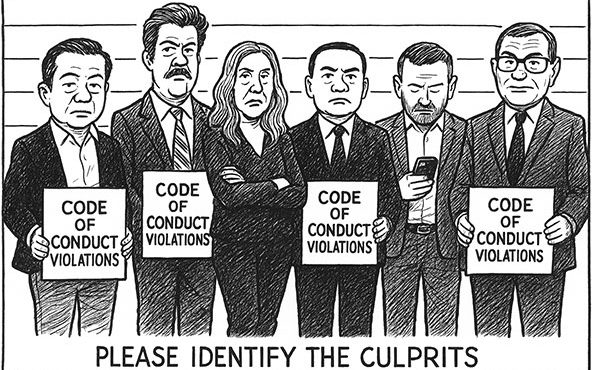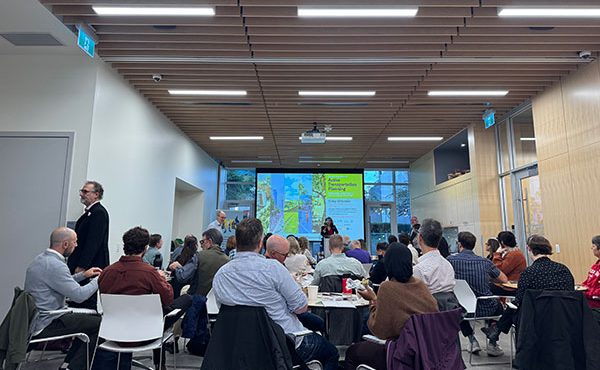
Participatory design requires user content for completion. Rather than deliver clean, finished products to a passive audience, participatory designers are creating open-ended, generative systems.
-Helen Armstrong, from the Introduction
Authors: Helen Armstrong and Zvedzana Stojmirovic, Princeton Architectural Press, 2011.
New this year in Princeton Architectural Press”s “Design Briefs” Series, Participate: Designing with User-Generated Content looks at the emerging mode of generating design through the collaborative input of multiple individuals. In four sections — community, modularity, flexibility and technology — authors Helen Armstrong and Zvezdana Stojmirovic have assembled a cohesive and interesting collection of interviews with designers, theorists and educators, images, case studies and “practice”. A foreward by Ellen Lupton speaks to the paradigm shift in the practice of design today, while Helen Armstrong’s introduction contextualizes participatory design in a broader history.
Trained as graphic designers and educators, Armstrong and Stojmirovic include a practicum with each section of the book, which give several possible exercises for employing the modes of participation they discuss. These exercises have been completed by students at Armstrong and Stojmirovic schools, Miami University and Maryland Institute College of Art respectively, with images of their work and references to websites providing further information included in the book. The practica are important inclusions, in that they at once augment the examples and also invite the reader to participate themselves, either by adding to an existing project or initiating a new one using one of the ideas provided.
Although an emphasis is placed on graphic and digital works, perhaps because of the nature of participatory design or perhaps because of the authors’ areas of expertise, Participate does include examples of other scales and dimensions of design, including architecture and industrial design. Quotes stretch the perspectives on this idea even further, looking to physicists, theorists, lawyers and designers for new points of view on the subject. The one area where Participate falls short is in the captions for the images, which frequently repeat text in the body, adding little to the otherwise compact and rich text.
A discussion of the changing nature of copyright, intellectual property and the open source movement falls into the section on community, along with the championing of the idea of Creative Commons, founded by Harvard law professor Lawrence Lessig. Armstrong and Stojmirovic do take a notably editorial approach, celebrating most aspects of the participatory design movement, while clearly critiquing crowdsourcing models that do not encourage collaboration or resource-sharing, and undermine the value of professional design services. In contrast, they celebrate works that encourage communication, collaboration, and resource-sharing among designers, and that contribute to a growing network that is supportive and productive. This spirit of collaboration is very familiar among students in school together; Participate asserts that this mode of working is possible outside the school environment through the explosion of digital tools available now.
A few wonderful, if very succinct, interviews with practicing designers expose the background of their work: David Eatock, founder of Indexhibit, the web application used to build and maintain an archetypal, invisible website format that combines text, image, movie and sound, discusses the moment he discovered an interest in user-generated content, while sketching with a friend at 16 on a beach in France. Indexhibit has grown to a form used by over ten thousand people, and it has become a catalyst for many of Eatock’s other works, also included in Participate.
Participate: Designing with User-Generated Content is a good diving board for a student, designer or educator wanting to understand the bigger picture of user-generated design, at a moment when it is driving a shift in the way we make and consume. It points out the pioneers in the field — those developing this work before participatory design had a name — and tells the story of how their work has morphed in ways that are unpredictable and unprecedented. But most importantly, it provides the tools for you to become a part of the movement of participation.
***
Laura Kozak is a designer, cartographer and curator. She is pursuing collaborative design of the urban environment through the Advanced Studies in Architecture program at the University of British Columbia. She is a regular contributor to Spacing Vancouver and curator at the Wee Gallery and 221A Artist Run Centre. Her independent design practice spans graphic design, cartography, architecture and urban design. In 2011, Laura curated Design in the Field at Emily Carr University of Art + Design.




